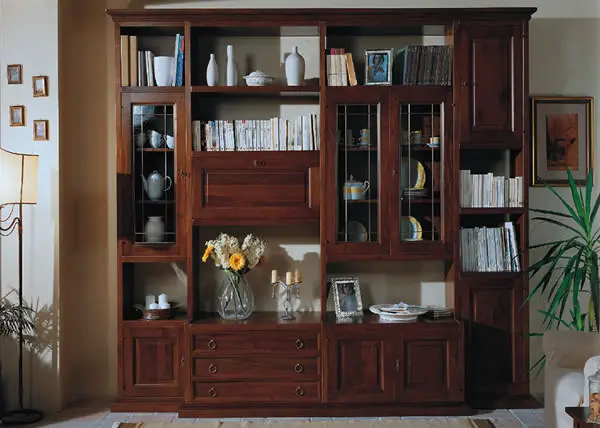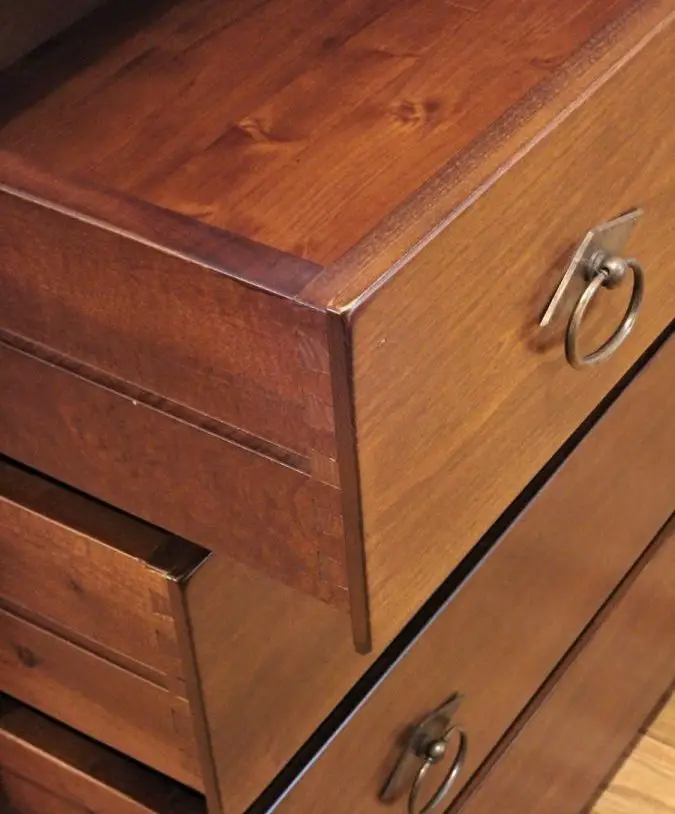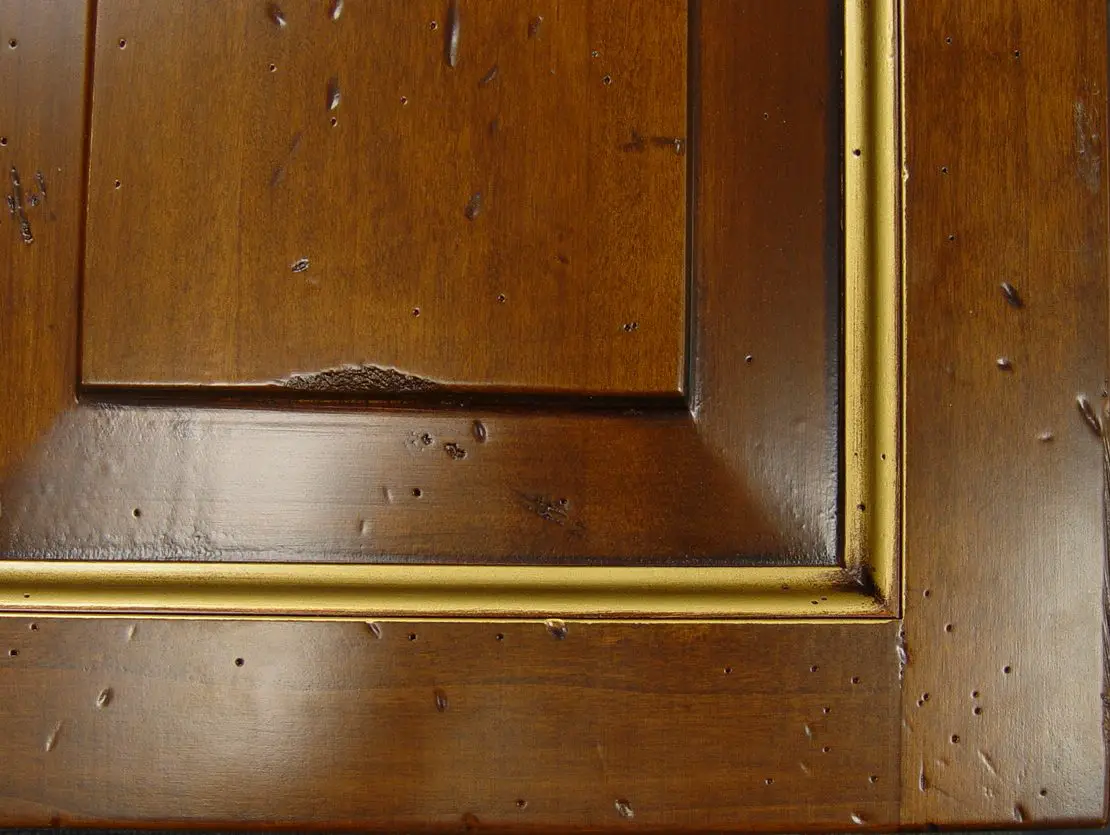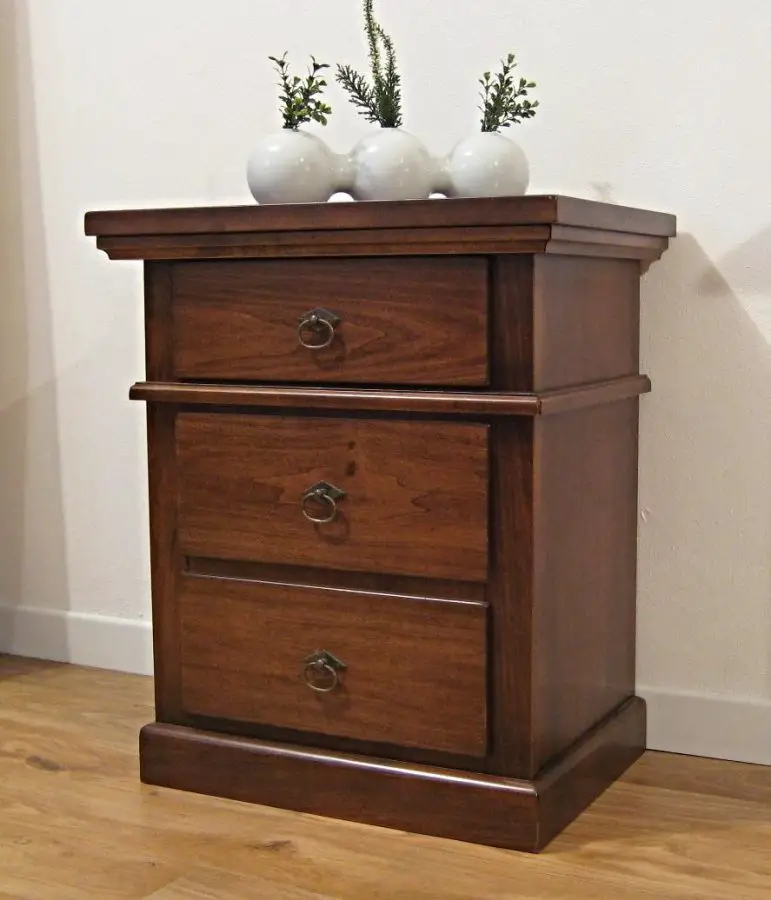Arte poverain translation, poor art, was an art movement that emerged in Italy in the late 1960s and early 1970s. It influenced interior design and decoration by introducing rustic, old-fashioned furniture and decoration with classical lines. It is a style that has become established in furniture and is highly appreciated.

Style poor art
Arte povera style in furniture means less precious wood species, classic walnut or dark cherry colours and simple, sober and useful design with straight lines and lots of drawers. The wood used is poplar, lime or aniseed, less often cherry or ash. Arte povera furniture has been made in our country for more than 20 years and is still in great demand.
The arte povera finishing method is a way of "ageing" furniture. Use berries in classic dark walnut, light and rustic or dark cherry. Use patinas or special glazes that produce the same staining effect. The patinas are in tone, not contrasting, because they don't need to stand out. The varnish film is not thick, but neither is it thin, and the gloss of the varnish is usually between 40 and 70 gloss.


The challenges of arte povera finishing
The main challenge of this style of furniture is white grinding. The wood used is of fast-growing species with a tendency to decay when sanded. Also, the bath is absorbed differently and stains may appear. It must therefore be sanded with great care using three different grain sizes in succession. Even if the recommendation is that the final paper grain should be 180, in this case it is possible to use 220 grit paper. The most difficult species are poplar and aniseed. Poplar is often replaced by lime, which is very similar but much easier to sand. The colour differs very little, the lime being more reddish.
Staining is usually done with glazes which are resin-containing glazes that prevent deep absorption. This avoids the appearance of stains. Sometimes it is necessary blank preparation of the wood so that the old look of the furniture is also supported by dents and scratches.
Glaze is applied by spraying or by cloth in excess, followed by wiping off the excess with a cloth. Wiping highlights the wood pattern and evens out the colour. Glaze also works as a patina. Wiping pushes it into the holes made when preparing the whitewash, or leaves it in the edges of door boards or corners. It's one of the easiest ways to get patinated furniture.
If, however, large differences in colour occur due to different absorption, it can be evened out by spraying on a thin layer of the same glaze. The amount applied should be very small so as not to darken the colour and reduce the adhesion of the varnish film. It does not even out if the colour differences are small. Sometimes it is these colour differences that give arte povera furniture its charm.


Arte povera furniture is suitable in the living room or bedroom, but also in the bathroom or kitchen. It also combines well with modern style, as such a piece of furniture further enhances modern lines and decoration.
I hope you find the above information useful. As usual, additions are welcome. And if you have any questions or queries, please leave them in the space below. I'm sure I'll reply.






























Ok, I follow your articles with great interest.
"Arte Povera"? I was perplexed. Never in my life have I heard that term. All the more intriguing as I am an architect so I suppose I am up to date with all artistic trends.
Moreover, I work in the furniture industry for an Italian company that produces exactly this type of furniture that we classify as late eclecticism. I didn't push the point too much, but I certainly didn't imagine that this style had a name and was part of a trend.
Current that would make a career in Romania. Hmm, here I have some reservations. Anyway, thank you very much for the information.
You talked in a previous article about how you can recreate, imitate an existing finish. As a specialist in the field, please tell me how you can be creative in creating an original, distinct, unique finish. I know that finishing is extremely laborious. Are there any patrons of originality in the field?
What is the relationship between form, function and finish chosen for a piece of furniture or an entire collection?
Regarding the finish chosen for the MDF doors in your kitchen, the answer was simple and unequivocal: patina!
Hello,
Let's take it one step at a time. 🙂 Arte povera furniture has indeed been made for a long time in Romania and the term is much used. And I'm surprised you haven't heard it before, especially since you work in a factory. I have been working in the woodworking and furniture industry since 1988 and have known the term since then. When there were still big furniture factories (many gone in the meantime) they made 3-4 truckloads of furniture a week. The furniture was mainly made of poplar, sometimes combined with lime and the finish was simple and predominantly walnut shades (dark or light). The challenge with this finish was uniformity, because poplar absorbs differently and stains appeared.
You ask me about the originality of a finish and the relationship between form, function and finish. My opinion is that a finish should not be treated alone, separate from the whole. A finish is nothing without the furniture underneath it. One must always look at the whole. Indeed, as wood finishers, we can copy a new finish that appeared at who knows what fair, but we don't copy it to stay on a wooden window but to be all furniture. Or, if it doesn't match the model, we haven't copied it. I can give you an example. I once made a sample finish for a fair that was a great success. It was done on a small piece of furniture. One of the Italians I was working with asked me to make a bookcase with that finish immediately after the fair. It came out horrible, it just didn't fit at all. That's why I say everything has to be seen as a painting and everyone involved is important.
All the best!